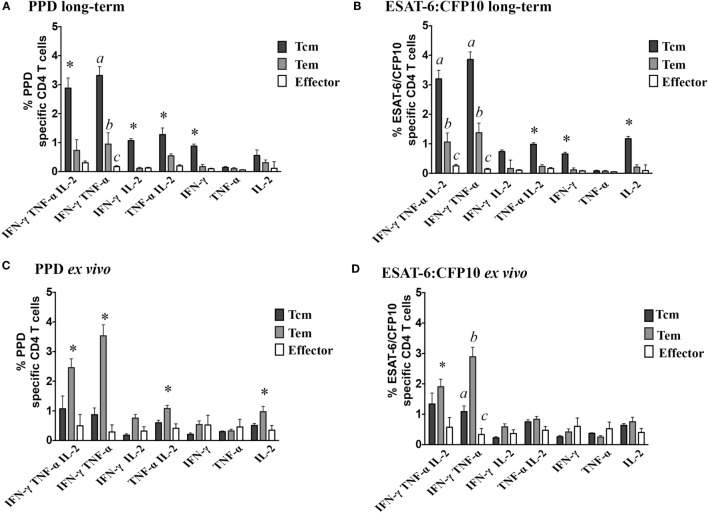Figure 2.
Polyfunctional profiles by effector/memory phenotypes differ based on culture conditions. For long-term culture, PBMCs were isolated and stimulated with a cocktail of Ag85A, TB10.4, and ESAT-6:CFP10 as well as PPD for 13 days followed by transfer to 96-well round bottom plates with APCs and addition of media alone, PPD, or ESAT-6:CFP10 for an additional 16 h. For ex vivo culture, PBMC were stimulated with media alone, PPD, or ESAT-6:CFP10 for 16 h. Cytokine production and effector/memory phenotype were determined by ICS flow cytometry. Results are presented as average and SE for responses over the course of the study (n = 30, 5 animals × 3 time points). Percentages of polyfunctional profiles in response to long-term stimulation with PPD (A) or ESAT-6:CFP10 (B) or ex vivo stimulation with PPD (C) or ESAT-6:CFP10 (D) split by effector/memory phenotype based on CD45RO and CCR7 expression (Figure S1 in Supplementary Material). *Responses differ (P < 0.05, Tukey’s) from the other two phenotypes. a,b,cDifferent letters indicate differences (P < 0.05, Tukey’s) in effector/memory phenotypes within a particular polyfunctional subset.

